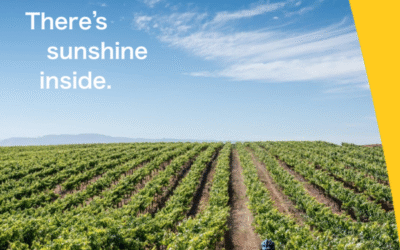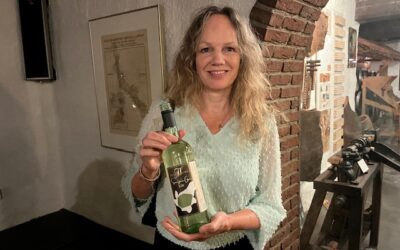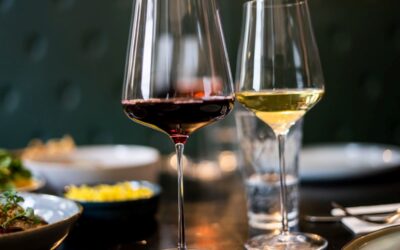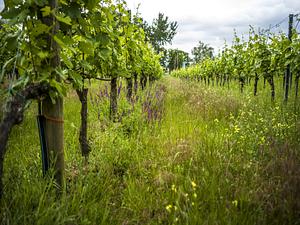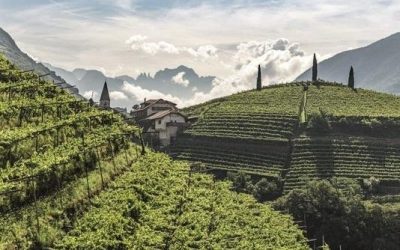Consorzio Vini di Romagna shares the harvest report and starts planning promotional activities for 2022
Faenza, December 2021 – 2021 has been a challenging year for agriculture in Emilia-Romagna, but winegrowing has yielded satisfying results. Although the numbers have not been particularly high, the quality of the grapes is definitely something else.
In order to define the quality of this vintage, we must start from December 2020, which turned out to be the wettest in Emilia-Romagna since 1961. This allowed for the accumulation of an important water reserve, which ended up being crucial given that 2021 turned out to be a dry year, especially in Romagna.
Late frost was experienced between March and early April: its negative effects have been amplified by the mild winter and the elevated temperatures between the two events, which further accelerated the phenological development of crops. The damage caused by frost has affected limited vineyard areas, particularly those with early budding such as Uva Longanesi, Chardonnay, Trebbiano and some early Sangiovese.
Low temperatures persisted throughout the month of May, slowing down the vine’s phenological development and bringing the flowering period to textbook standards, generally towards the end of May-early June. This predicted a “classic” vintage, but a hot and dry summer broke out, decisively speeding up ripening.
The climatic trend between winter-spring yielded averagely smaller and more sparse bunches: this generated positive effects on the health of the grapes, which was supported by the lack of rainfall. This ultimately resulted in lesser problems caused by downy mildew as well as esca, but, on the other hand, a lot of attention had to be paid to powdery mildew, which was stimulated by the wind and the good diurnal temperature variation.
Although it was generally warm, the temperature variations between day and night have been ideal for the development of aromas and for maintaining good acidic balance: such conditions have refined the quality of the white grapes, which yielded wines characterized by freshness, finesse and good balance.
Despite the lack in rainfall, the water reserve and the available emergency irrigation have allowed for a proper veraison between the end of July and the beginning of August: the high temperatures and especially the hot wind around mid-August did not negatively affect phenolic maturity, although it still slightly sped the latter up.
Thus, the black grapes harvested were perfectly healthy, rich in color and characterized by a good balance between the main parameters of maturation.
Harvest period
2021 harvest in Romagna timidly began before mid-August with some grapes destined as base for sparkling wines; the harvest of early varieties followed suit: Chardonnay, Pinot Bianco and Pinot Grigio have produced excellent bases for sparkling wines and highly expressive fruity wines.
Harvesting operations took off just before September 6-7 with Pignoletto and Albana, which, despite registering fewer quantities compared to the previous year, revealed impeccable health as well as sensory and technological qualities, almost positing 2021 as one of the best vintages of the last decade for Albana wines.
A decline in production has also been observed for Trebbiano Romagnolo but starting from mid-September batches of grapes with the right sugar content and ideal pH for sparkling wine bases arrived in the cellar; thus, fine and balanced white wines were obtained.
The main red of Romagna, Sangiovese , was then harvested, and it registered remarkable results in terms of color, structure and aromatic profile. This year’s Sangiovese wines will be characterized by rich extract, good alcohol content, elegance and good potential for aging. They say that “Only time can tell” and so we’ll have to wait and see what the future holds. But we can safely say that this year is one of the best vintages of the last twenty years for Sangiovese.
“All in all, the 2021 vintage has an overall good quality; but we cannot say the same in terms of quantity, especially if compared with the previous year.” – states Ruenza Santandrea, President of Consorzio Vini di Romagna – “ The trend affected the various areas in a different manner. On the hills, production rate dropped between 20% and 30%; while on the plains, the decline was at 5% on average, remarkably less compared to the hilly areas”.
Upon closing with the 2021 vintage, the Consorzio Vini di Romagna and its members are already at work for the upcoming year. They are pleased to announce that Vini ad Arte 2022 will be held from May 22-24 in Faenza.
IL CONSORZIO VINI DI ROMAGNA
Since 1962, Consorzio Vini di Romagna has been an association that brings together 115 wineries, including 7 cooperatives, 5 bottlers and 103 wine producers, to protect the production of Romagna wines with Protected Designation of Origin and Protected Geographical Indication. It has always worked to support and develop wine quality, balanced prices and the promotion of its products and territory. Today, the Consorzio leads the enological growth of Romagna, reaching excellent quality in recent years, with recognition and awards from both national and international levels. The Consorzio is led by President Ruenza Santandrea, originally from Faenza, together with Director Filiberto Mazzanti. The protected denominations include 1 DOCG, 5 DOCs, 4 IGTs: Romagna Albana DOCG, Romagna DOC – including Sangiovese, Pagadebit, Cagnina, Bianco and Rosato Spumante –, Colli d’Imola DOC, Colli di Faenza DOC, Colli Romagna Centrale DOC, Colli di Rimini DOC, Rubicone IGT, Forlì IGT, Ravenna IGT, Sillaro IGT.


